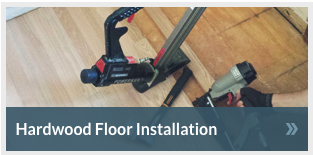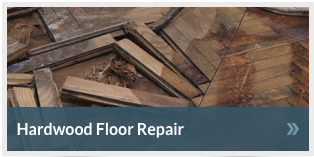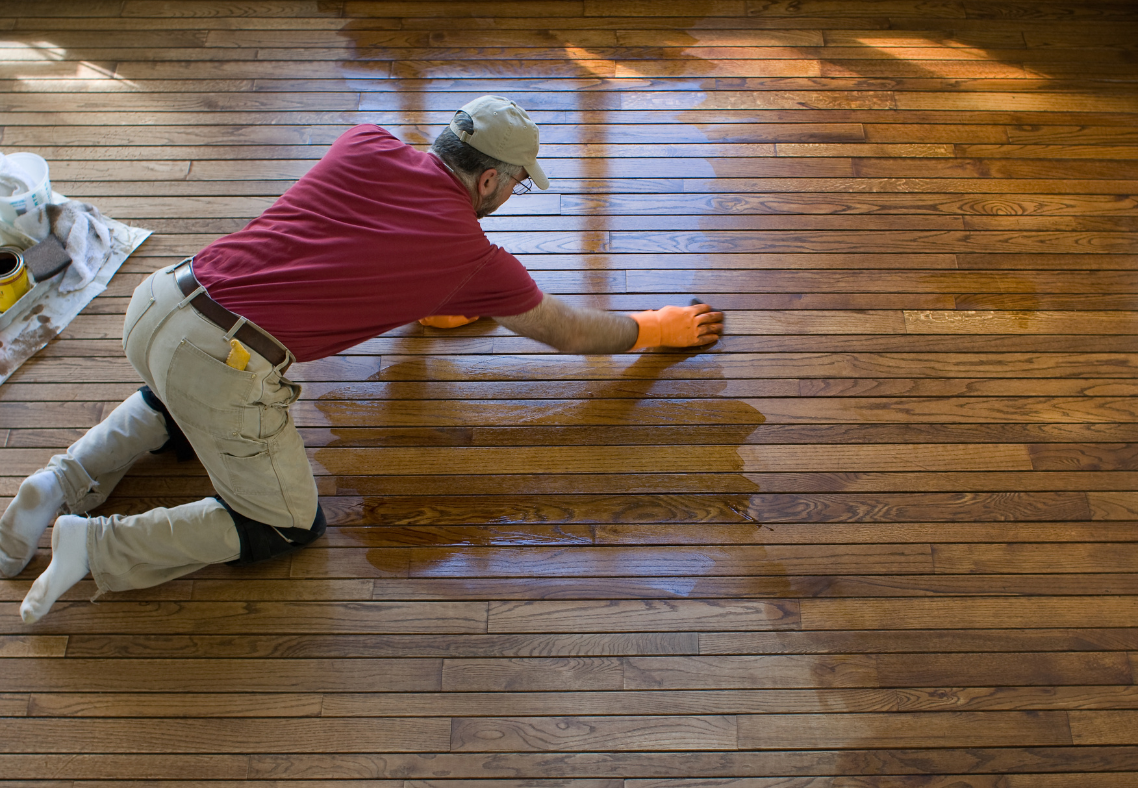Resurfacing vs Refinishing Hardwood Floors: Which Is Better?
Hardwood floors are a timeless and elegant addition to any home, but over time, even the most durable hardwood floors can show signs of wear and tear. Whether you live in a historic row house in Fells Point or a contemporary home in Perry Hall, MD, maintaining the beauty of your hardwood floors is essential for preserving your home’s value and aesthetics. When your floors begin to lose their luster, two options are typically considered: resurfacing or refinishing. But which is the better option for your Baltimore home? In this blog post, we’ll explore the differences between resurfacing and refinishing hardwood floors, helping you make an informed decision about which approach best suits your floors and your needs.
Resurfacing vs Refinishing Hardwood Floors: Which Is Better?
What Is Hardwood Floor Refinishing?
Hardwood floor refinishing is a more intensive restoration process that involves sanding down the floor to remove the top layer of the existing finish, and sometimes the wood itself. The sanding process eliminates surface imperfections such as scratches, dents, and stains. Once the old finish is removed, the bare wood can be stained to a new color or left in its natural state, and then sealed with a protective finish. Refinishing hardwood floors can bring older floors back to life without the need for removing and replacing the boards, which can be time-consuming and expensive. For Baltimore residents with historic homes that feature original hardwood floors, refinishing is a fantastic way to preserve the beauty and authenticity of the wood while restoring its original charm.
The Refinishing Process Includes:
- Sanding: A professional-grade sander is used to strip away the old finish, stains, and imperfections on the surface.
- Staining (Optional): Once sanded, you have the option to apply a new stain to change the color of the floor.
- Sealing: A protective finish is applied to seal the wood and provide durability.
While refinishing is a thorough and effective method of floor restoration, it’s important to understand that the process takes time. In most cases, it can take several days or even a few weeks to fully complete, depending on the size of the area and the condition of the wood. Homeowners will need to stay out of the room until the process is fully finished, allowing the stain and sealant to cure. Despite the time commitment, the end result is nothing short of impressive. Your hardwood floors will look brand new, with a renewed finish that can last for decades with proper care.
What Is Hardwood Floor Resurfacing?
Resurfacing hardwood floors is a less intensive process compared to refinishing, making it a quicker and more affordable option for floors that are in relatively good condition but just need a little refresh. Resurfacing involves using a machine to lightly sand off the top layer of the floor’s existing finish, then applying a new layer of finish to protect the wood.
This process is often referred to as “buffing and coating” and is ideal for floors that have minor surface imperfections like light scratches, dullness, or mild wear. It’s a more superficial repair and doesn’t address deep scratches, stains, or warped boards. However, because the wood itself is not deeply sanded down, the process can usually be completed in a single day, with minimal disruption to your household.
The Resurfacing Process Includes:
- Buffing: A light sanding or buffing is done to remove the surface layer of finish without going too deep into the wood.
- Applying a New Finish: A fresh coat of finish is applied to enhance the floor’s appearance and protect the surface from future wear.
Resurfacing is a cost-effective and time-efficient solution for homeowners looking to freshen up their floors. However, if your hardwood has extensive damage, deep scratches, or visible stains, resurfacing may not be enough to restore its appearance.
Which Is Better: Resurfacing or Refinishing Hardwood Floors?
The decision between resurfacing and refinishing your hardwood floors ultimately depends on the condition of your floors and your long-term goals. Here’s a breakdown of when each method is appropriate:
Choose Resurfacing If:
- Your floors have light surface scratches, scuffs, or wear but are otherwise in good condition.
- You want a quick, less expensive solution to refresh the appearance of your floors.
- Your floors have not been deeply damaged or stained, and you don’t need a full restoration.
- You’re looking to complete the project in a shorter time frame with minimal disruption to your home.
Resurfacing is a good option for homeowners who need a short-term refresh without the time and cost commitment of refinishing.
Choose Refinishing If:
- Your floors have deep scratches, stains, or significant surface damage.
- The wood is starting to warp or has water damage, which requires deeper sanding to remove.
- You want to change the color of your floors by applying a new stain.
- You’re looking for a long-term solution that can extend the life of your floors by decades.
Refinishing is the best option for restoring older, more damaged hardwood floors to their original beauty. It’s an investment that will pay off in the long run by giving your floors a fresh start and adding years to their life.
How to Decide Which Type of Hardwood Floor Repair Is Right for You
When deciding between resurfacing and refinishing your hardwood floors, it’s essential to evaluate the condition of your floors and what you hope to achieve. Here are a few factors to consider:
- The Condition of Your Floors: If your floors have deep scratches, discoloration, or warping, refinishing is likely the better option. Resurfacing is best suited for floors with minimal surface wear.
- Budget: Refinishing is more expensive due to the intensive labor and materials involved, but it’s a longer-lasting solution. Resurfacing is a more affordable, quick fix but doesn’t offer the same level of restoration.
- Time Commitment: If you need a quick solution with minimal disruption to your daily life, resurfacing may be the best option. Refinishing requires more time to complete but yields more significant results.
- Long-Term Investment: Refinishing hardwood floors is a more permanent solution that can last for decades, while resurfacing is a more temporary fix that may need to be repeated in a few years.
Contact Flawless Floor Today for Hardwood Floor Refinishing in Baltimore County, MD
At Flawless Floors, we specialize in bringing hardwood floors back to life through expert refinishing and resurfacing services. Whether your floors need a full refinishing or just a simple resurfacing, our team of experienced professionals can help you decide which option is best for your home. Don’t let worn-out floors detract from the beauty of your Baltimore County home. Contact us today to schedule a consultation and learn how we can restore your floors to their original elegance. With Flawless Floors, you can trust that your hardwood flooring will receive the highest quality care and craftsmanship, leaving you with stunning, long-lasting results. Call us now and start the journey toward beautiful, revitalized hardwood floors!

Sanding & Refinishing

Installation

